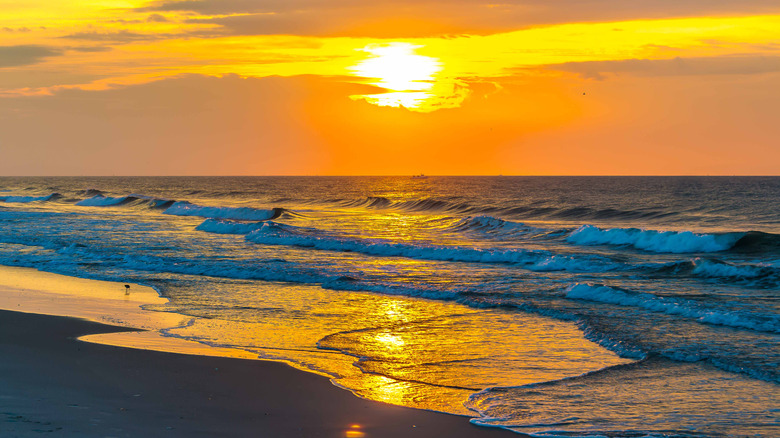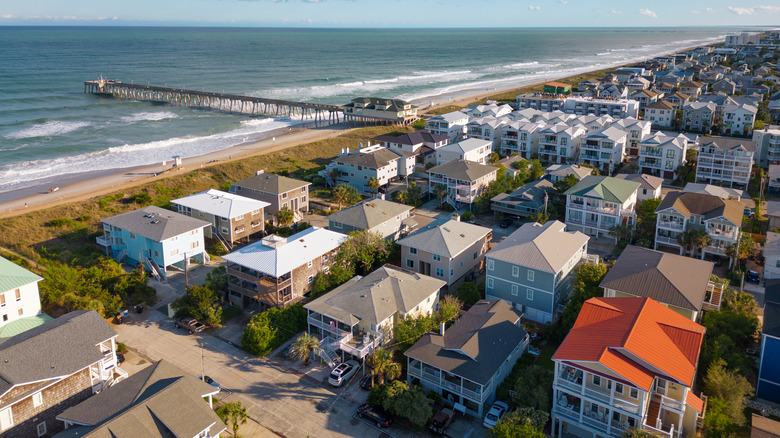The Dangerous Reason Sunny East Coast Beaches May Close Even When A Hurricane Is Far Away And Out Of Sight
From summer to fall, the East Coast is faced with the threat of hurricanes. It goes without saying that you don't want to be anywhere outside when a storm hits; flooding and dangerous winds can be life threatening. However, a hurricane doesn't necessarily have to make landfall to put you in peril. It can be far away and out of sight, leaving you with picturesque sunny days. While this might seem like the perfect time to hit the sand and sea, it's anything but. In fact, you'll find that East Coast beaches may be closed during times like this due to dangerous rip currents.
Speaking to Scientific American, coastal physical oceanographer Melissa Moulton from the University of Washington stated, "Rip currents are strong seaward currents that are caused by breaking waves." Moulton added, "They can be as narrow as an alleyway or as wide as a multilane highway; they can last for just a few minutes or sometimes a number of hours." Hurricanes can produce massive waves that contribute to this hazard. Ultimately, the currents can drag swimmers away within seconds and cause them to drown.
According to the National Hurricane Center, this phenomenon has been responsible for up to 15% of tropical storm and hurricane deaths. In August 2025, Hurricane Erin led to the closure of beaches in New York and New Jersey for this very reason. In North Carolina, one of America's five vacation destinations most likely to get hit by hurricanes, some coastal towns implemented no-swimming advisories.
Hurricane Erin led to rip currents at North Carolina beaches
Also in North Carolina, Hurricane Erin stayed offshore but caused plenty of trouble via rip currents as it approached the coast. At Wrightsville Beach, located minutes away from Wilmington, up to 70 people had to be saved from Hurricane Erin's swells. Sam Proffitt, the Ocean Rescue Director at Wrightsville Beach, detailed the situation to CNN saying, "Some of these rips are pulling six to eight people out at a time." In the days leading up to the storm, Proffitt warned beachgoers (via WHQR) that, no matter how enticing the water may look, they should steer clear of it. This is advice everyone should keep in mind when a hurricane is imminent, even if it hasn't led to beach closures.
Although rip currents may be especially prevalent during hurricane season, there is always a risk of encountering one when you're at the beach. Per a 2019 study published by Natural Hazards and Earth System Sciences, there are over 100 fatalities from rip tides each year in America. Keep yourself safe by learning how to identify where dangerous rip currents are. It's also imperative to never ignore any warning flags. A yellow flag at the beach, for instance, means that you could encounter rip currents.
If you're pulled in while swimming, follow this advice from the National Oceanic and Atmospheric Administration's Dr. Greg Dusek. In a video for Ocean Today, Dusek says, "You want to swim out of the rip, parallel to shore, along the beach and then follow breaking waves back to shore at an angle."

